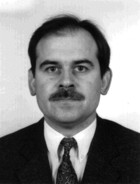Medicine and limits to human existence
The main objective of medicine is to stop the suffering of patients or, in certain cases, at least to alleviate it. However, the impact of medicine on the unfolding of a human life manifests itself in a considerably wider perspective than solely by restoring the normalcy of life opportunities of a particular person.
Medicine holds the means to continue expanding the limits of human existence as we know them today. This becomes particularly evident when new treatment and diagnostics methods allow us to shift the beginning and the end of human life on the temporal axis. Intensive care and in vitro fertilisation have made human life possible in situations where it would be completely impossible without the help of medicine. Yet all these and other means that allow modern medicine to dramatically interfere with human existence cannot be used indiscriminately. Among other considerations, their correspondence to the recognised principles of medical ethics must always be taken into account. Medical care and research are inextricably linked with ethics and values, which is why the impact of medicine and its new practices on human existence constantly draws attention. The two arguments in medical ethics that often contrast in one way or another are the conservative “nature’s way” argument and the “justifiable benefits” argument; the compromise between these two can be ensured by subjecting the cases at hand to a meticulous social control. Public discussion on the simpler as well as the more complex medical ethics issues in Estonia has been largely insufficient and rather sporadic. One of the internationally tried and tested ways would be a much wider involvement of the Estonian Council of Bioethics, as the national ethics council, into raising, discussing and solving these issues, and increasing public awareness.
